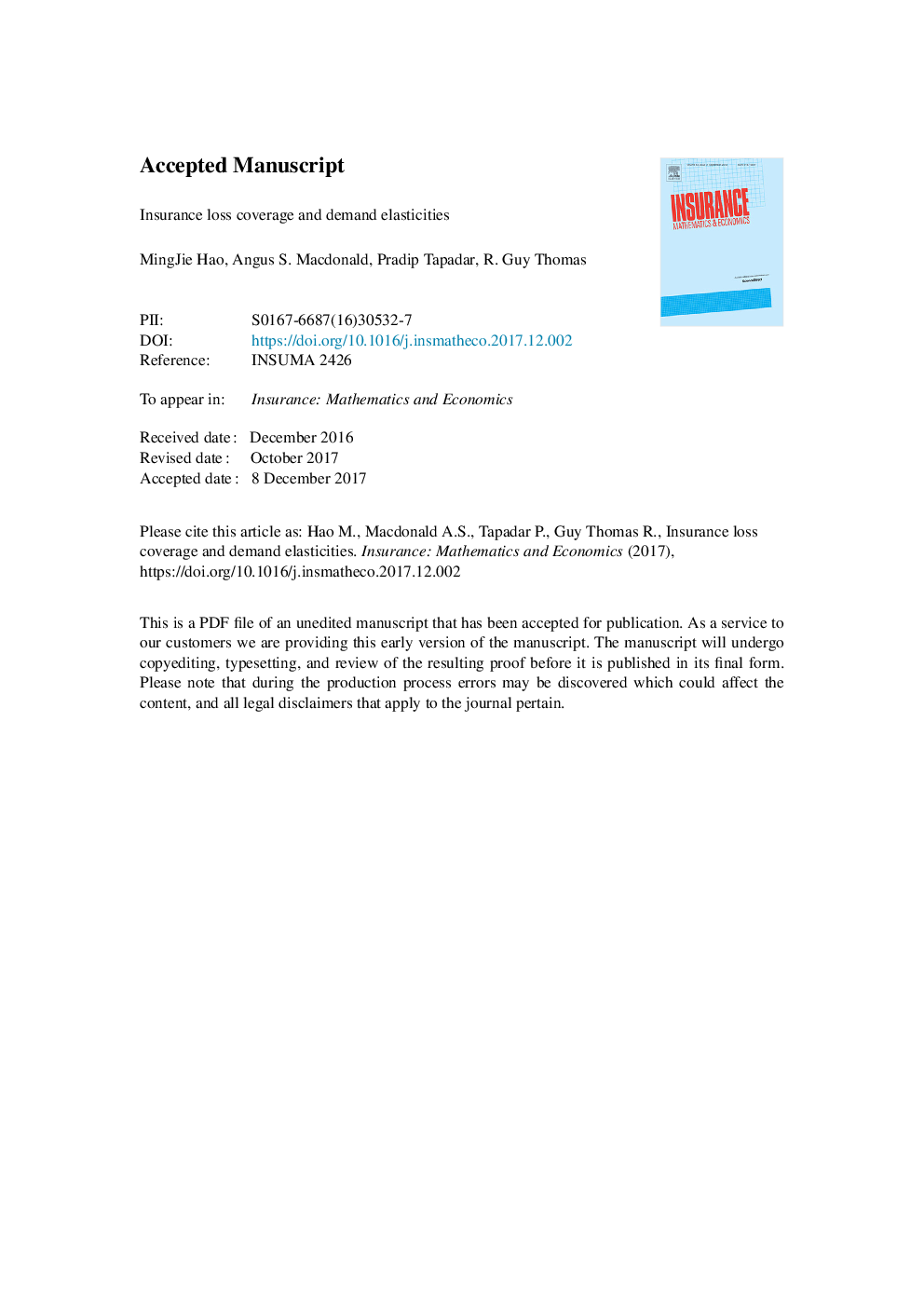| Article ID | Journal | Published Year | Pages | File Type |
|---|---|---|---|---|
| 7354725 | Insurance: Mathematics and Economics | 2018 | 28 Pages |
Abstract
Restrictions on insurance risk classification may induce adverse selection, which is usually perceived as a bad outcome. We suggest a counter-argument to this perception in circumstances where modest levels of adverse selection lead to an increase in 'loss coverage', defined as expected losses compensated by insurance for the whole population. This happens if the shift in coverage towards higher risks under adverse selection more than offsets the fall in number of individuals insured. The possibility of this outcome depends on insurance demand elasticities for higher and lower risks. We state elasticity conditions which ensure that for any downward-sloping insurance demand functions, loss coverage when all risks are pooled at a common price is higher than under fully risk-differentiated prices. Empirical evidence suggests that these conditions may be realistic for some insurance markets.
Related Topics
Physical Sciences and Engineering
Mathematics
Statistics and Probability
Authors
MingJie Hao, Angus S. Macdonald, Pradip Tapadar, R. Guy Thomas,
